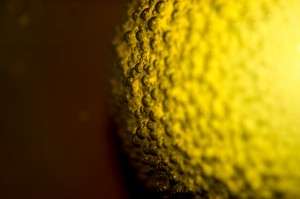What are VOCs (Volatile Organic Compounds)?
Are you wondering what VOCs (volatile organic compounds) are?
Are you concerned with the health and wellness of your office, building or home in relation to the chemicals used?
In this article we will discuss what VOCs (volatile organic compounds) are, which products tend to have higher levels of VOCs, how they affect your health and how to make low VOC choices.

© Kutt Niinepuu | Dreamstime Stock Photos
1 Volatile organic compounds, also known as VOCs, are emitted as gases from certain solids or liquids. VOCs include a variety of chemicals, some of which may have short- and long-term adverse health effects. Concentrations of many VOCs are consistently higher indoors (up to 10 times higher) than outdoors. 2 Outdoors, VOCs are released into the air mostly during manufacturing or use of everyday products and materials, while indoors however, VOCs are mostly released into the air from the use of products and materials containing VOCs.
Because VOCs are found in many forms, several laws and regulations are implemented by the specific party in which they affect. For example, the EPA (United States Environmental Protection Agency) regulates VOCs in the air, water and land, while the United States Depart of Labor and it’s Occupational Safety and Healthy Administration (OSHA) regulate VOC exposure in the workplace.
Examples of Products and Materials that Contain high levels of VOCs:
- Paints
- Lacquers
- Paint Strippers
- Cleaning Supplies
- Environmental Tobacco Smoke
- Autmobile Exhaust
- Pesticides
- Building Materials
- Furnishings
- Copiers and Printers
- Correction Fluids (i.e. white-out)
- Carbonless copy paper
- Glues and Adhesives
- Permanent Markers
- Air Fresheners
- Dry-Cleaned Clothing
- Carpets
- Wood Preservatives
Health Concerns with Exposure to Higher Level of VOCs
3 Volatile Organic Compounds (VOCs) are major pollutants in indoor air, which significantly impact indoor air quality and thus influencing human health. Long term exposure to VOCs will be detrimental to human health causing sick building syndrome. The EPA has found concentrations of VOCs in indoor air can be 2 to 5 times greater than in outdoor air and sometimes far greater. During certain activities, indoor levels of VOCs may reach 1,000 times that of the outside air.
Some health effects of VOC exposure include:
- Eye, nose and throat irritation
- Headaches
- Loss of coordination
- Nausea
- Damage to liver, kidney and central nervous system
- Allergic skin reactions
- Fatigue
- Dizziness
The extent and nature of the health effect will depend on many factors including level of exposure and length of time exposed. However, eye and respiratory tract irritation, headaches, dizziness, visual disorders and memory impairment are among the immediate symptoms.
Reducing Risk to High Levels of VOCs
- Knowledge
Being knowledgeable about which products are typical of high VOC levels is crucial to reducing the risk of exposure.
- Ask for low VOCs or no VOCs
Because of the increasing health awareness for VOCs, many products are available today that have little to no VOCs. Because paints are a large contributor to high VOC levels, today many paints are manufactured that have little to no VOCs. You may also notice the lack of that “‘new building” smell when walking into a newly certified LEED building or a building that is conscious of using low or no VOC paints.
- No inventory
If you must use products that contain higher levels of VOCs, be sure to purchase the amount needed rather than purchasing more that will cause you to store the product(s).
- Ventilation
Proper ventilation is key when using a product with high VOC levels.
References to Products with Low VOCs to No VOCs
- Paints
Eartheasy provides a great list of low VOC to no VOC paints. Visit Eartheasy for your guide to non-toxic paints.
- Furniture and Wood
GreenYour.com offers a list of organic, low VOC and FSC-certified furniture. Visit GreenYour.com for more information.
- Cleaning Products
Products that are GREENGUARD and Green Seal Certified are low VOC and chemical emitting products. Manufacturers such as Diversey, offer an entire line of Green Seal and GREENGUARD certified products.
References
- 1 The United States Environmental Protection Agency | http://www.epa.gov/iaq/voc.html
- 2 Natural Resources Defense Council | http://www.nrdc.org/enterprise/greeningadvisor/aq-low_voc.asp
- 3 Science Direct | http://www.sciencedirect.com/science/article/pii/S0160412007000281
What are your thoughts?
Do you have any tips for using low VOC products?




